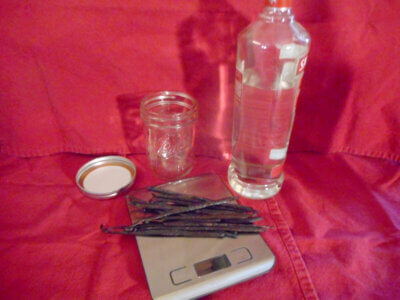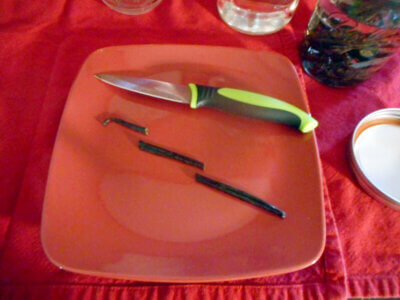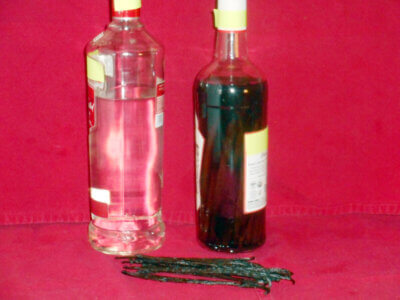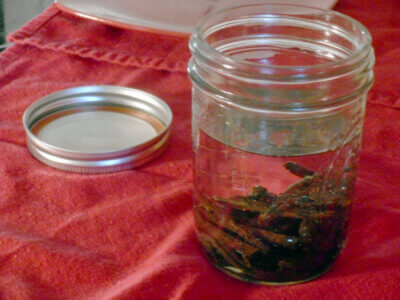Vanilla: A tropical treat you can extract yourself
Most of us recognize that little brown bottle on the spice shelf that imparts a wonderful fragrance and flavor to baked goods and beverages. It’s a staple in our kitchens, but have you ever wondered where vanilla extract comes from?
Pure vanilla extract (not “imitation” vanilla flavoring) gets its flavor from the vanilla bean, the seed pod of the vanilla orchid vine (Vanilla planifolia). Native to Mexico and South America, it’s hardy to U.S. Department of Agriculture Plant Hardiness Zones 10-11. Today, vanilla is grown in Mexico, Madagascar and other hot, humid climates.
Growing vanilla commercially requires a great deal of hands-on labor. In its native habitat, the flowers are pollinated by a small, specialized species of Melipona bee. However, in commercial settings, because of the structure of the flower, they must be pollinated by hand, and after six to nine months, each will produce only one vanilla bean.
To ensure they have reached the proper stage of ripeness, the seed pods are inspected and harvested by hand. They then go through a multi-step curing process over several months before heading to market. It’s no wonder vanilla is the world’s second-most expensive spice.
Vanilla beans are graded based on their appearance and quality. Grade A beans measure about 6 inches long and have a higher moisture content, strong fragrance and deep brown color. They’re the most expensive and are generally used in cooking and baking.
Grade B beans are smaller, between 4-6 inches, contain less moisture and may have small imperfections. They’re used for making extract. Grade C beans are the lowest quality and are used for commercially made extract and other products.
Most vanilla extract in stores is designated “single fold” according to U.S. Food and Drug Administration standards that specify the strength of the alcohol (at least 35 percent) and the proportion of vanilla beans to alcohol.
Packets containing one or two vanilla beans are available at local markets. Larger quantities can be ordered online. To ensure you have the proper amount of vanilla beans, order by weight rather than count since bean size and moisture content vary.
If you’d like to make your own vanilla extract, you’ll need just two ingredients: alcohol (at least 70 proof) and vanilla beans. You’ll also need a glass container with an airtight lid such as a mason jar. A kitchen scale is also helpful. Vodka works well for making extract since it has little flavor and will allow the vanilla to be the star.
To make vanilla extract, measure and pour the alcohol into the container. Add the appropriate weight in vanilla beans (0.8 ounces beans per cup of alcohol for single fold). The beans must be submerged completely in the alcohol.
If the container is tall enough, they may be added whole. If not, cut the beans to the proper length to fit. You also can slit the beans to allow the “caviar” (seeds) to be directly exposed to the alcohol, though this is not necessary.
Seal the container with its lid. Give it a little shake. Now put the container somewhere away from the light. It won’t take long for the alcohol to work its magic, and it will turn a deep brown color.
If you open the container, you should smell vanilla. Be patient. While you can use the extract after two to three months, it will take six to twelve months to achieve the most flavorful results. Time will only make it better. Just be sure the beans remain submerged in the alcohol.
Whether you make your own extract or purchase it, whenever you inhale that wonderful fragrance, remember the orchid where it all began.
(Deborah J. Benoit is a University of Vermont Extension master gardener from North Adams, Mass., who is part of the Bennington County chapter.)




